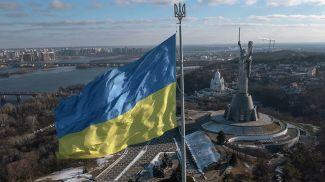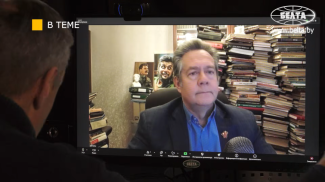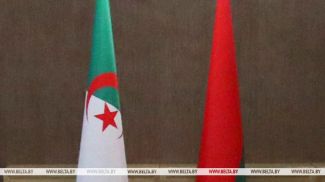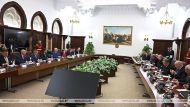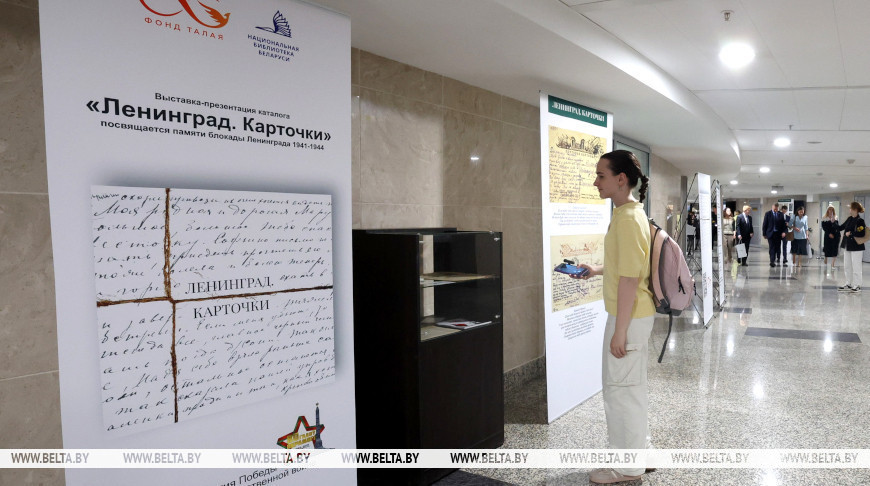
MINSK, 30 July (BelTA) - The exhibition "The Siege. Ration Cards", commemorating the 80th anniversary of Victory in the Great Patriotic War, has opened at the National Library of Belarus in Minsk, BelTA learned.
The exhibition was organized at the initiative of the Aleksei Talai Charitable Foundation. It is dedicated to the history of besieged Leningrad, the city’s defense, and the role of cultural resilience during the war years. The exhibition features ration cards, identity documents, and archival records depicting civilian life, the photographs of besieged Leningrad taken by Leningradskaya Pravda journalists, the images capturing cultural events during the siege. The exhibition also premiered the catalog “Leningrad. Cards” featuring the wartime postcards from besieged Leningrad drawn from the private collection of historian Aleksei Sementsov.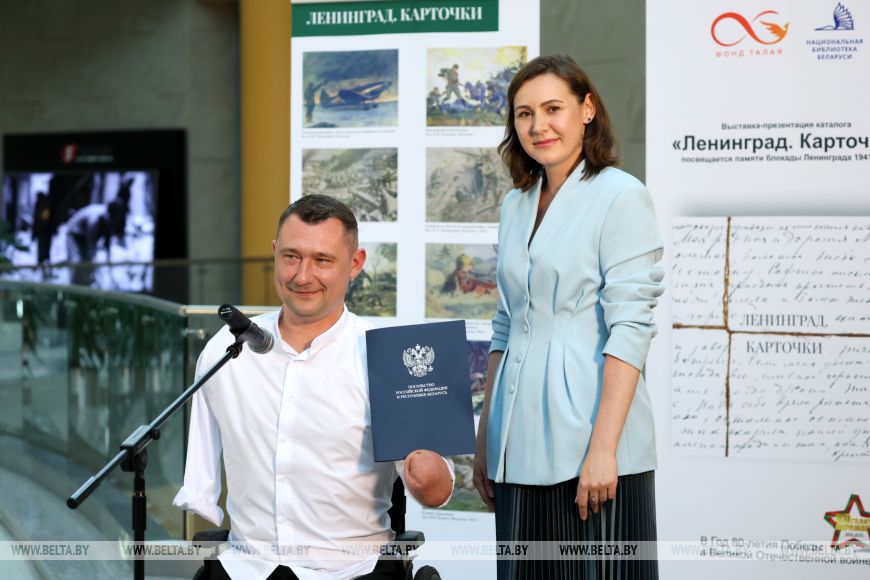
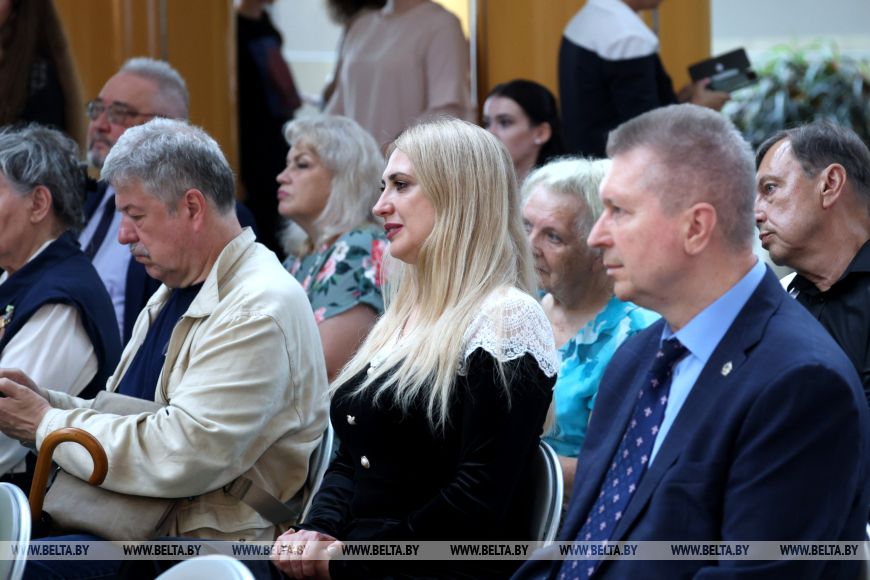
"The catalog categorizes cards showcasing artworks, daily life scenes, and prominent figures of the period. Additionally, the exhibition displays wartime posters, passes, and letter-cards where civilians documented their horrific experiences. The exhibition features approximately 100 artifacts," said Yelena Yaroshevich, Deputy Director for Social Initiatives at the Aleksei Talai Charitable Foundation.. "It will remain at the National Library for about two months before touring regional cities,” she added.
According to the public figure, Paralympic, motivational speaker and founder of the Foundation Aleksei Talai emphasizes: "We must tirelessly highlight our people's contributions to defeating Nazi Germany. These stories need to reach the minds and hearts of our children and grandchildren. Many veterans of the Great Patriotic War are no longer with us today, but the experience of our long-suffering, heroic people should remain the foundation for the younger generations to be able to preserve the sovereignty of Belarus in the future. We remember with tears what the entire Soviet people endured, how survivors persisted in besieged Leningrad, cherishing the smallest comforts, finding joy in a sunny day, drawing strength from it to overcome unimaginable hardships," he emphasized.
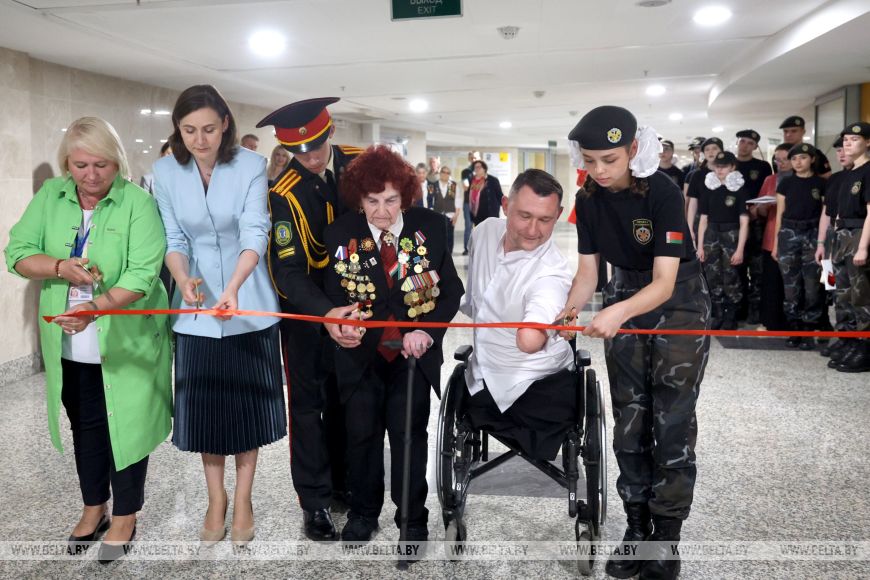
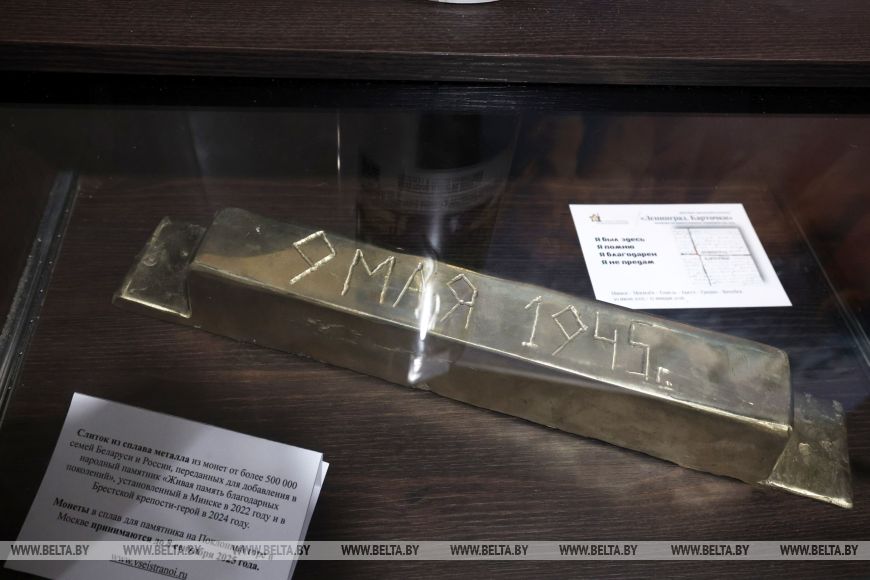
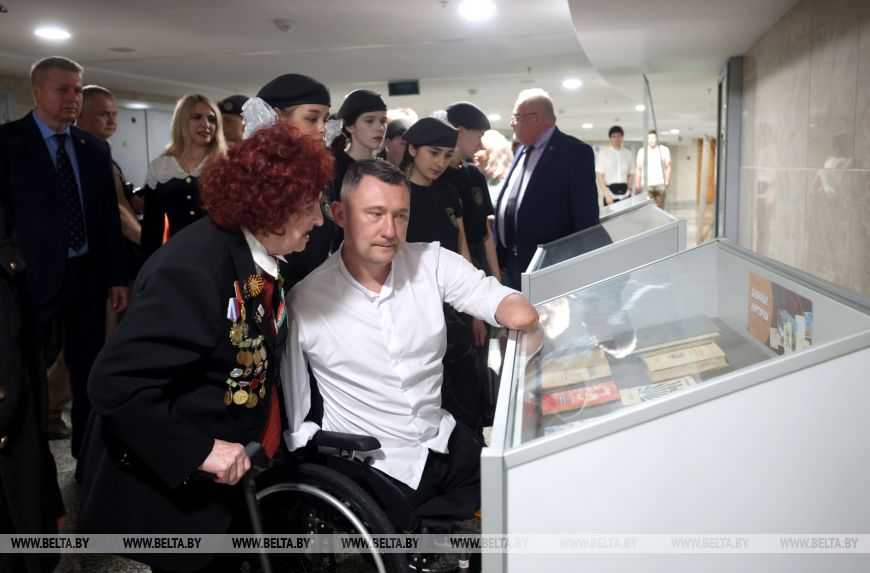
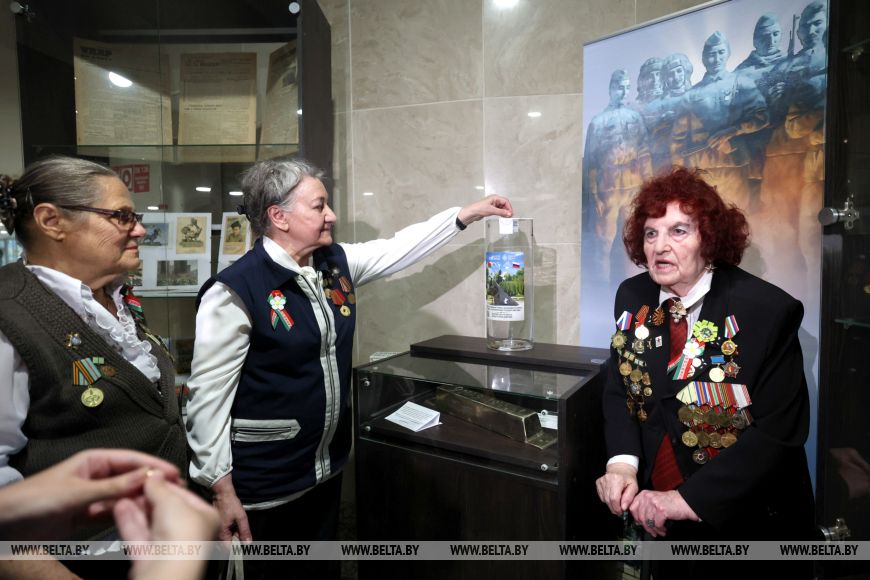
She recalled how citizens survived 900 days without water, heat or electricity before being evacuated across Lake Ladoga's ice road in 1942.
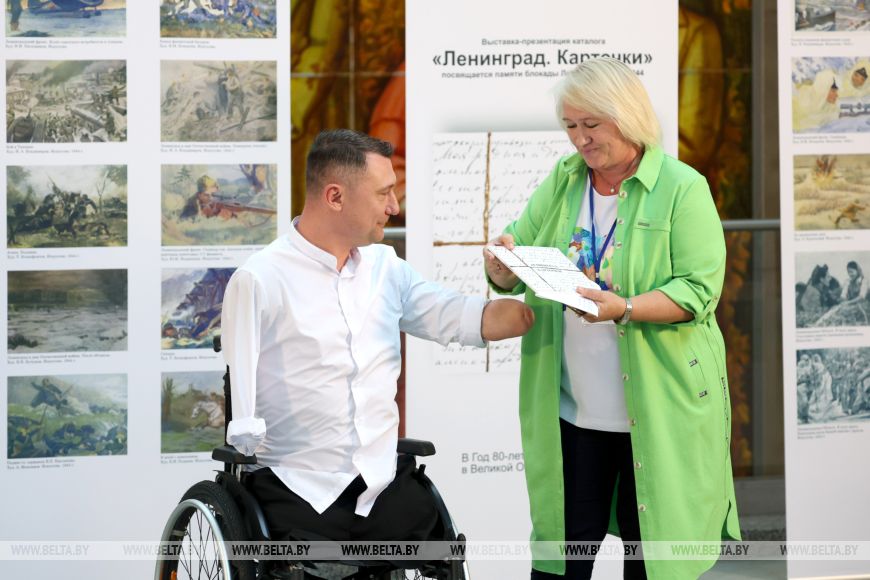
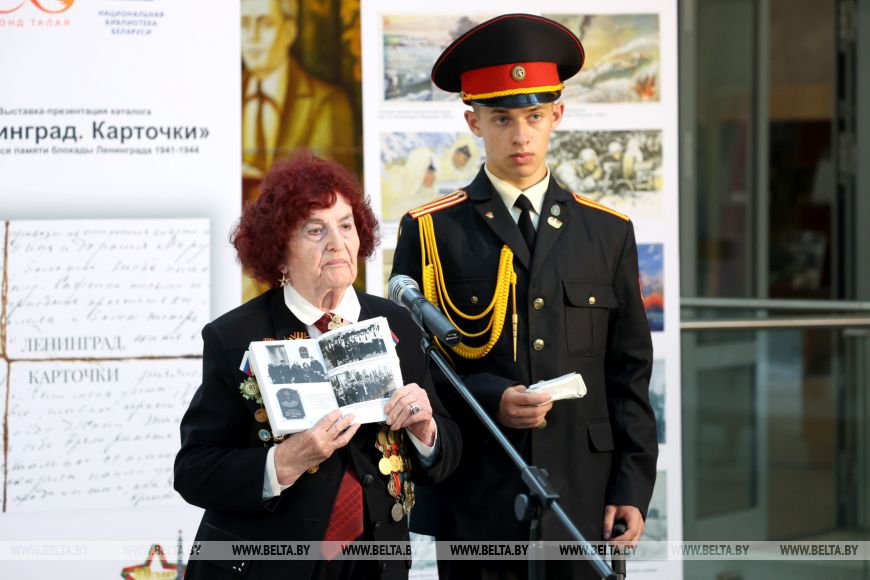
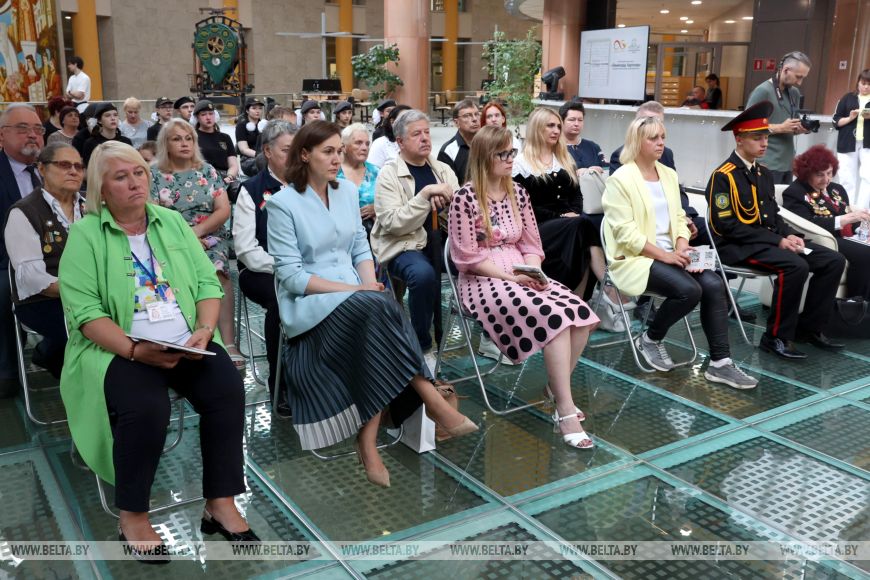
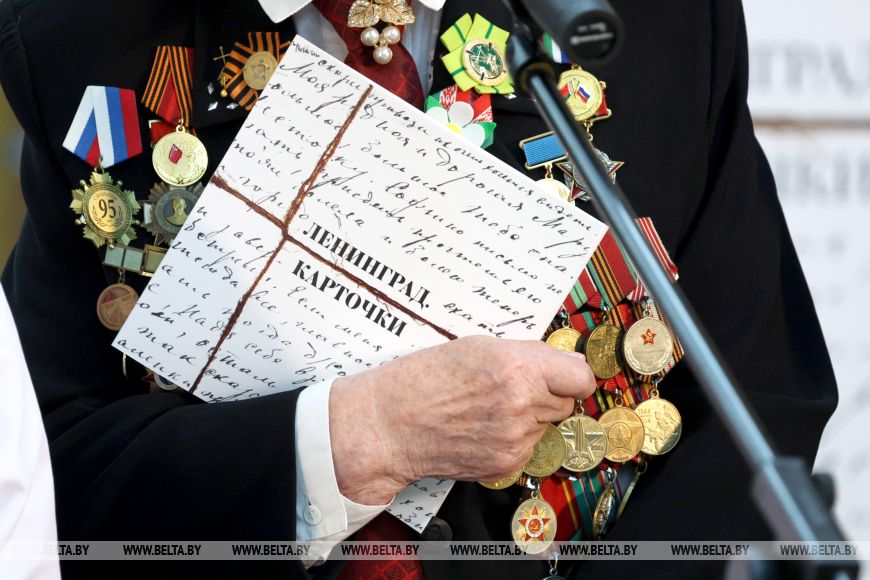
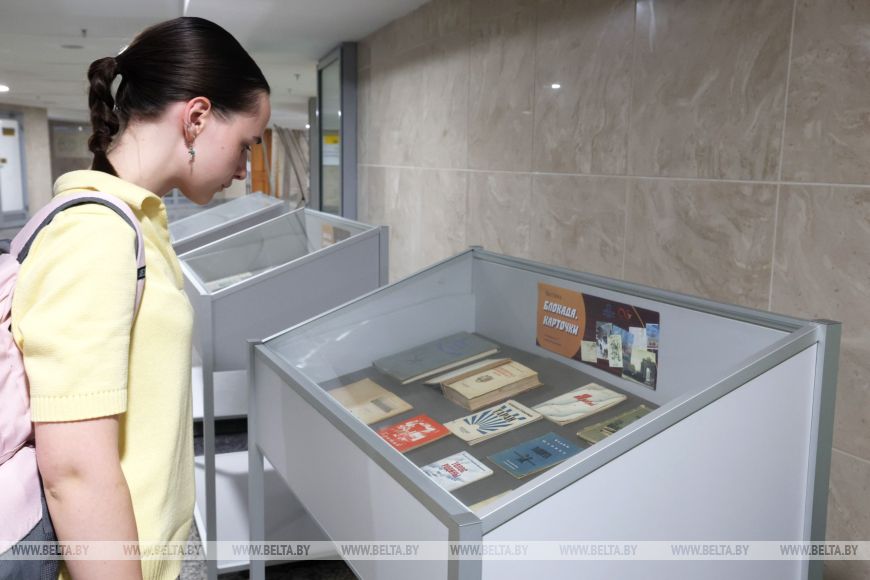

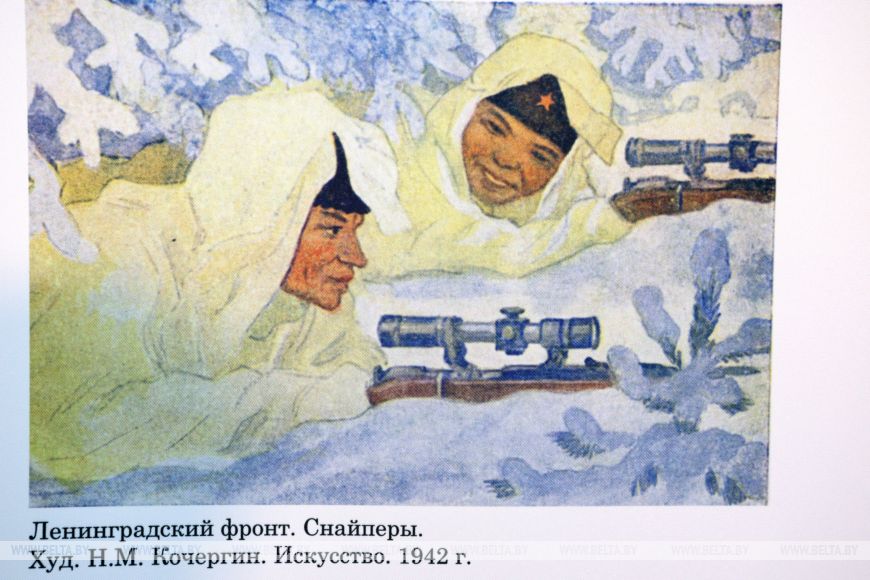
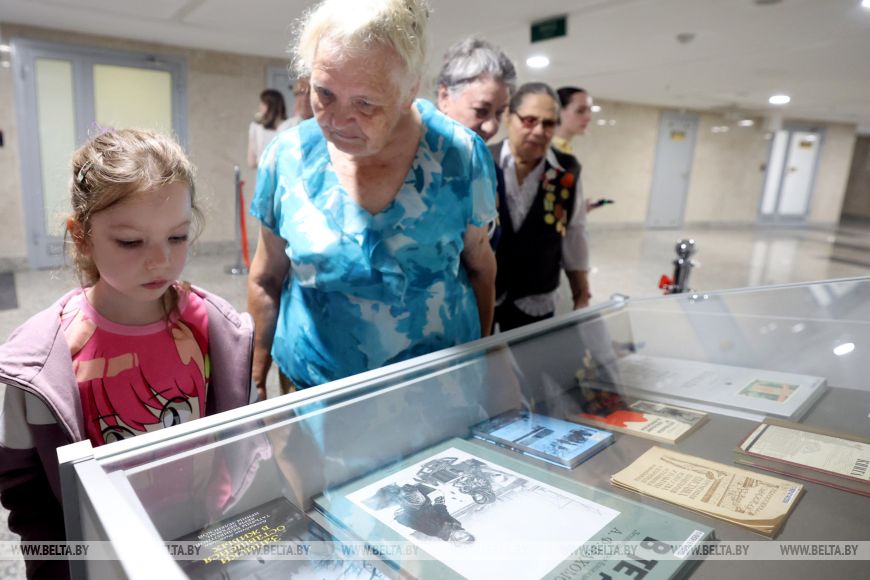
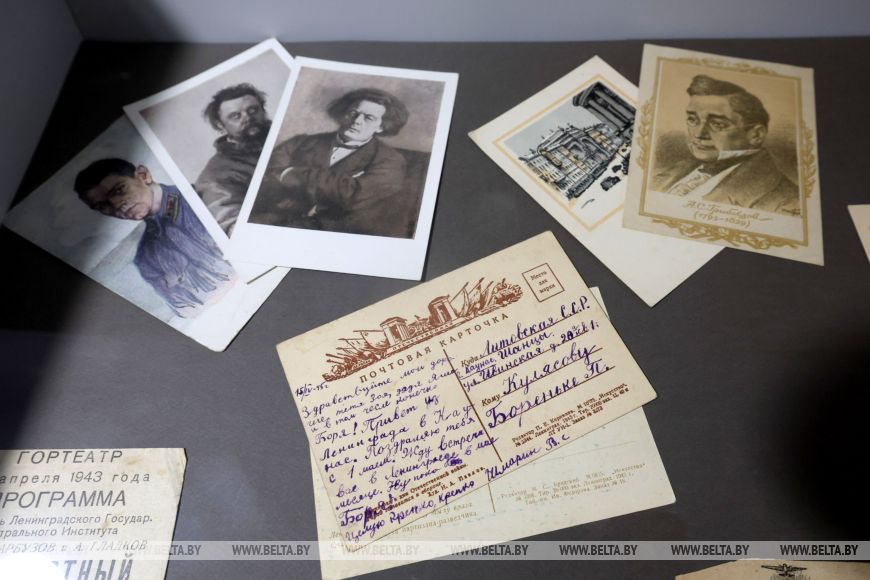
The exhibition will be running through 28 September.
The exhibition was organized at the initiative of the Aleksei Talai Charitable Foundation. It is dedicated to the history of besieged Leningrad, the city’s defense, and the role of cultural resilience during the war years. The exhibition features ration cards, identity documents, and archival records depicting civilian life, the photographs of besieged Leningrad taken by Leningradskaya Pravda journalists, the images capturing cultural events during the siege. The exhibition also premiered the catalog “Leningrad. Cards” featuring the wartime postcards from besieged Leningrad drawn from the private collection of historian Aleksei Sementsov.


"The catalog categorizes cards showcasing artworks, daily life scenes, and prominent figures of the period. Additionally, the exhibition displays wartime posters, passes, and letter-cards where civilians documented their horrific experiences. The exhibition features approximately 100 artifacts," said Yelena Yaroshevich, Deputy Director for Social Initiatives at the Aleksei Talai Charitable Foundation.. "It will remain at the National Library for about two months before touring regional cities,” she added.
According to the public figure, Paralympic, motivational speaker and founder of the Foundation Aleksei Talai emphasizes: "We must tirelessly highlight our people's contributions to defeating Nazi Germany. These stories need to reach the minds and hearts of our children and grandchildren. Many veterans of the Great Patriotic War are no longer with us today, but the experience of our long-suffering, heroic people should remain the foundation for the younger generations to be able to preserve the sovereignty of Belarus in the future. We remember with tears what the entire Soviet people endured, how survivors persisted in besieged Leningrad, cherishing the smallest comforts, finding joy in a sunny day, drawing strength from it to overcome unimaginable hardships," he emphasized.




Mariya Yagodnitsina, chairwoman of the Belarusian Union of Leningrad Siege Survivors, confessed that visiting the exhibition brought back memories of lost loved ones. “I have no one left alive from that time,” she shared. "My father joined the people's militia in Leningrad. My brother worked as a toolmaker at the Okhta shipyard before leaving for the front with the Komsomol organization. Though only 12, I worked with my mother in a workshop sewing undergarments for Red Army soldiers. Children like me attached the tapes. In 1942, a bomb destroyed the neighboring building and buried our workshop in rubble all in one day.”
She recalled how citizens survived 900 days without water, heat or electricity before being evacuated across Lake Ladoga's ice road in 1942.




“Before the war, over 20,000 Belarusian youth went to Leningrad's vocational schools since Belarus lacked skilled workers. When war came, 12,000 remained buried in Leningrad's soil. Thanks to Aleksandr Lukashenko and Boris Yeltsin's 1996 agreement, we now have a memorial specifically honoring these Belarusian youth,” Mariya Yagodnitsina explained.





Liudmila Vysotskaya, Deputy Director General of Belarus' National Library, noted the exhibition's emotional impact: “We thought we knew everything about Leningrad's siege and its horrors. Yet these exhibits reveal how victims maintained meaning - watching films, reading newspapers, even publishing books amid starvation.”
The exhibition will be running through 28 September.





